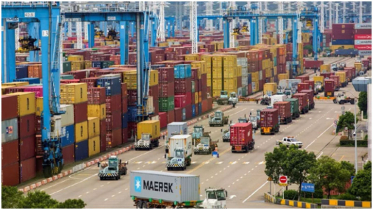Developing the semiconductor industry can raise Bangladesh's per capita income
For Bangladesh, taking advantage of the value creation opportunity out of labour, knowledge and ideas in the global value chain of semiconductor is an essential requirement to advance its per capita income, according to a recent report by Metropolitan Chamber of Commerce and Industry (MCCI).
Moreover, it can also increase the role of total factory output (TFP) to GDP growth, and ultimately advance Bangladesh towards advanced economic status.
In MCCI’s report titled "Developing Semiconductor Industry in Bangladesh" published on Monday, It is projected that by 2030, the global semiconductor industry will rise to a staggering $1.5 trillion market.
MCCI's initiative is a strategic step towards capturing a share of this lucrative industry, positioning Bangladesh as one of the players in the global arena, the report mentioned.
Japan attained and sustained semiconductor leadership over 30 years due to pursuing reinvention and incremental innovation.
But due to the US’ punitive trade measure, rise of PC wave and IBM’s selection of Intel’s Microprocessor, Silicon Valley gained the global silicon edge.
On the other hand, due to Intel’s avoidance of smartphone wave and embracing of third party foundry model, TSMC led Taiwan has succeeded in migrating the silicon edge. resulting in producing 90% high-end microchips.
Such dynamics has been still unfolding and will likely be changing the trajectory of the global value chain of the semiconductor industry.
Where Bangladesh stands
So far Bangladesh’s success has been in forming three chip design firms, offering 3rd party services to global fabless companies and IDMs, like Apple, Global foundry and AMD with a strong pool of 400 designers.
Although, OSAT facility started in the 1980s in Chittagong Export Processing Zone, unfortunately neither it scaled up nor it catalyzed the cluster formation.
Besides, Bangladesh’s engineering graduates have been showing noticeable performance in Silicon Valley and other global hot spots of the semiconductor value chain.
The production of engineering graduates having relevance to the semiconductor industry has ramped up.
Furthermore, government and trade bodies have been showing interest in facilitating the growth of the semiconductor industry.
It is time to integrate dots of competences or positive wavelets into a synchronized and timely response in creating a chain reaction for forming specialization, so that Bangladesh can succeed as a major node in the global value chain of the semiconductor industry, the MCCI report stated.
Why Bangladesh should care
MCCI believes that tapping into the global semiconductor industry is a path towards achievement of high income country status by 2041.
Not only that, but it will also help tap into a growing industry estimated to expand twofold by 2030, employment generation, as well as unlock entry & growth opportunities for local industries.
The chamber suggested seven strategic options to successfully tap into the semiconductor industry, which include:
- Developing a large pool of designers and fostering the ecosystem in scaling up design services
- Developing infrastructure and winning global subsidy race for attracting MNCs for establishing design centers, OSAT facilities and foundries
- Proposing schemes to attract local electronic assemblers to graduate to innovators & reinventors through designing and manufacturing of microchips
- Enhancing the ecosystem for developing chips for forming fabless and micro chip design service providing companies, as driver of innovation and reinvention
- Promoting incremental advancement of microchip centric locally produced products
- Innovating microchips and producing them for smart Bangladesh and similar initiatives
- Exploring opportunities for setting up foundries and producing semiconductors for local consumption and export
Success factors include comprehension of semiconductor industry dynamics and synchronized, timely and adequate response in partnership with existing local industry partners, Bangladeshi-origin global semiconductor experts, academia, government, development programs, industrial competitiveness, development agenda programs for attaining high-income status and sustainability, geopolitical realignment trends, MNCs and startup infrastructure.
Aligning with these parties will help gain comparative advantage in economies of specialization created through cumulative effect of synchronized and synergistic investment in plants, human resource, R&D, infrastructure, and incentives.
Lessons from the rise of Japan, South Korea and Taiwan, among others, indicate that for attaining high-income status, Bangladesh must succeed to trade high value knowledge and ideas (intellectual assets), at a large scale.
Such knowledge and ideas will mostly be traded as product and process features. Hence, there is a need for a suitable technology core for attaining high scalability of knowledge and idea production, consequentially creating a market for it through innovation of products and processes.
To meet this urgency it appears that semiconductor is among the most suitable candidates.
Lessons from Japan, South Korea and Taiwan indicate that firms of these nations succeeded in harnessing the semiconductor technology core to create a considerable flow of knowledge and ideas & their conversion into highly profitable export revenue.
In addition to trading such intellectual assets as standalone products, they have also succeeded in leveraging them for incremental advancement and reinvention of existing products.
As a result, in addition to generating revenue from semiconductor devices and services, these countries have been gaining a competitive edge by leveraging semiconductor technology core.
Consequently, epicenters of significant inventions such as light bulb, camera, television, displays, data storage and silicon chips have migrated from Europe and the USA to these countries, making them advanced economies, the MCCI report added.
.png)




